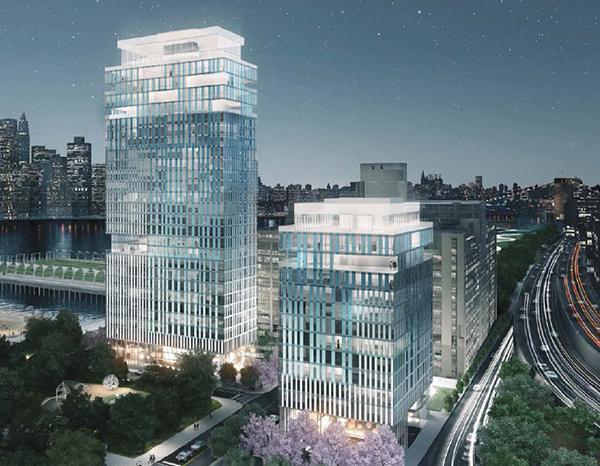Opponents of Brooklyn Bridge Park’s Pier 6 highrises: ‘Build only to support park!’
At ESD meeting, call for new EIS, minimal development

Opponents of the Pier 6 towers made their case at a meeting of the Brooklyn Bridge Park Development Corporation (BBPDC) at the Empire State Development on Monday. Shown: One of 14 proposals for the Pier 6 development. Rendering by Asymptote Architecture
The Brooklyn Bridge Park Development Corporation (BBPDC) began the public process to change the park’s General Park Plan (GPP) at a board meeting held at the Empire State Development Corp. (ESD) on Monday.
The park hopes to change the GPP to allow affordable housing in two high-rise towers planned for Pier 6, and shift the number of residential units between the towers.
Opponents of the Pier 6 towers used the comment period to make their case against the Pier 6 development, and to remind the board that it had committed to building only the amount of housing absolutely necessary to support the park.

Brooklyn Heights
View MoreRead the Brooklyn Height's Press and Cobble Hill News. Find out more about Brooklyn Height's History here.